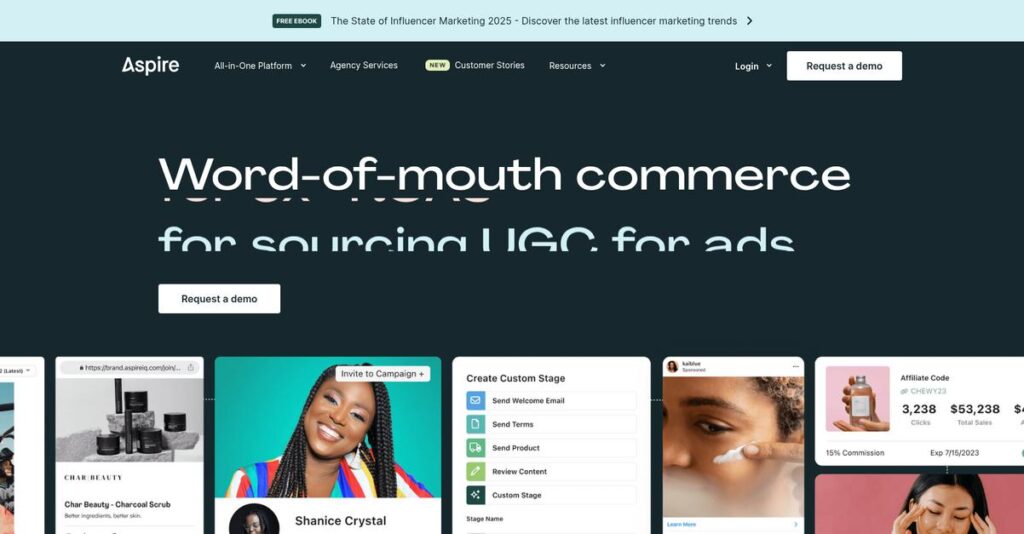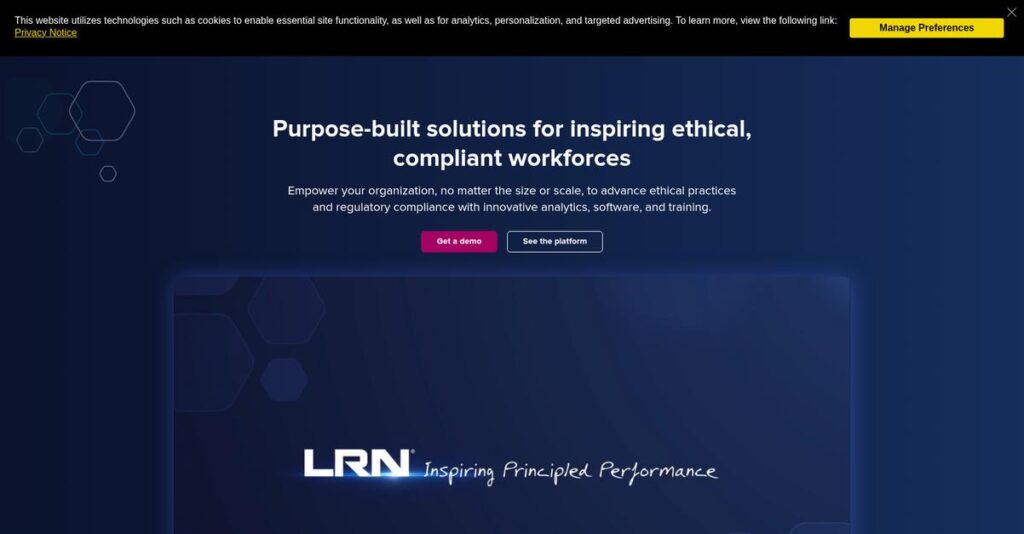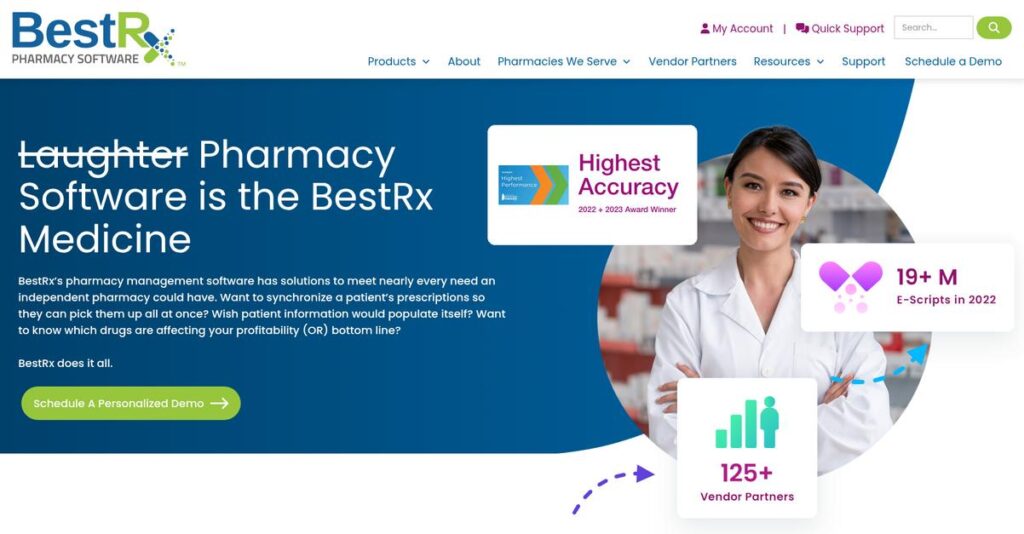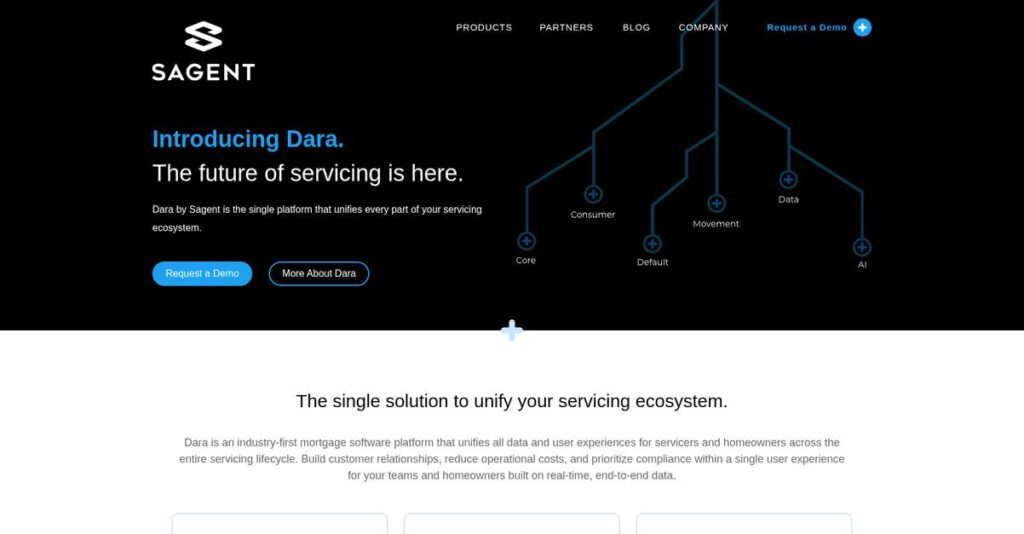Finding quality creators shouldn’t feel this hard.
If you’re managing influencer programs, you know how overwhelming it is to hunt, vet, and coordinate with countless creators—especially when your brand’s growth hinges on smart partnerships.
From my analysis of Aspire, I learned that scattered influencer workflows eat up your team’s time and cost you serious marketing momentum.
After digging into their platform, I found Aspire centralizes discovery, outreach, relationships, and even payments—all in one place. It’s not just automation; it’s about making creator management less chaotic and more scalable for D2C brands.
In this review, I’ll break down how Aspire helps you run campaigns efficiently without losing sight of long-term community building.
You’ll see in this Aspire review how the platform streamlines creator search, campaign execution, real ROI tracking, and why it stands out against other influencer marketing tools.
This guide will give you the features you need to compare—and the clarity to decide confidently.
Let’s dive into the analysis.
Quick Summary
- Aspire is an all-in-one influencer marketing platform that helps your team discover creators, run campaigns, and manage payments in one place.
- Best for mid-market to enterprise D2C and e-commerce brands scaling long-term creator programs.
- You’ll appreciate its powerful creator discovery tools combined with streamlined campaign and payment workflows.
- Aspire offers custom pricing starting around $500/month with no free trial but provides personalized demos.
Aspire Overview
From my research, Aspire has been on a mission to simplify creator marketing since 2014. Based in San Francisco, they build all-in-one software for brand-creator relationships.
What really sets them apart is their dedicated focus on mid-market and enterprise D2C brands. They aren’t trying to be everything to everyone; I found they deeply understand the e-commerce playbook and build for it specifically.
In writing this Aspire review, I was impressed by their recent $14 million funding round. This capital is fueling smart growth, including new affiliate tools to connect campaigns to sales.
Unlike competitors that limit your outreach, their platform includes a searchable database for finding new talent. My analysis shows this provides essential flexibility for discovering fresh partners beyond your immediate network, a major advantage for scaling up.
You’ll typically find them working with high-growth D2C companies in beauty, apparel, and home goods—organizations ready to scale their influencer programs professionally and leave messy spreadsheets far behind.
- 🎯 Bonus Resource: Speaking of managing large-scale operations, exploring enterprise legal management software can help mitigate risks and gain financial control.
What stood out most to me is how their strategy centers on creating an integrated platform for the creator lifecycle. This directly addresses your need to consolidate scattered tools into one ROI-focused system.
Now let’s examine their capabilities.
Aspire Features
Is managing influencer campaigns a nightmare?
Aspire offers an all-in-one platform built to centralize your entire influencer and affiliate marketing workflow. Here are the five main Aspire features that can revolutionize how you work with creators.
1. Creator Discovery & Outreach Engine
Finding the right creators a challenge?
Manually sifting through profiles takes ages, leading to missed opportunities and irrelevant matches. This wastes valuable time and resources.
This Aspire feature lets you search over 200 million profiles with advanced filters and AI recommendations. What impressed me most is how its lookalike suggestions find untapped talent, ensuring you connect with highly relevant partners for your brand.
You can efficiently build a high-quality creator roster and launch outreach campaigns faster, focusing on scaling your program effectively.
2. Campaign Management & Automation
Campaigns feel like chaos?
Managing multiple creator campaigns manually leads to missed deadlines and communication breakdowns. This creates endless headaches.
This feature lets you build campaigns with clear deliverables and automate creator communication with rule-based triggers. What I found is the central dashboard provides a single source of truth, keeping every status updated in real-time.
You get streamlined workflows, managing hundreds of creators efficiently without constant manual follow-up, saving immense time.
3. Creator Relationship Management (CRM) & Payments
Are creators just one-off transactions?
Losing creator history means missing opportunities to re-engage top talent. Payment complexities further complicate scaling efforts.
Aspire acts as a dedicated CRM, storing contact info, past performance, and payment details. What impressed me most is how the integrated payment system simplifies financial operations, handling everything from gifting to affiliate commissions.
You can build long-term relationships with high-performing partners and streamline payouts, fostering loyalty and simplifying your finances.
4. Content & UGC Collection
Manually collecting content from creators?
Scattered content across platforms makes repurposing difficult and time-consuming. You waste hours manually downloading assets.
When creators post campaign content, Aspire automatically pulls it into a central content library with performance metrics. Here’s what I found: it eliminates manual content retrieval, making asset management incredibly efficient for your team.
You get a centralized hub for all generated content, allowing easy repurposing across your marketing channels, saving significant effort.
5. Analytics & ROI Tracking
Measuring only vanity metrics?
Without true ROI insights, you can’t justify creator program spend or identify which partnerships drive real business value.
Through integrations, Aspire tracks sales driven by creator links and discount codes, generating comprehensive reports. This is where Aspire shines: it directly links creator efforts to revenue, showing ROAS and CPA for tangible results.
You can demonstrate real business impact to leadership, optimize your budget, and double down on creators driving the most sales.
- 🎯 Bonus Resource: Speaking of comprehensive reports and optimizing care, my guide on Applied Behavior Analysis (ABA) Software provides insights into specialized reporting for behavioral health.
Pros & Cons
- ✅ Centralized workflow manages entire creator lifecycle effectively.
- ✅ Powerful creator discovery tools find niche, high-quality influencers.
- ✅ Responsive customer support assists during onboarding and use.
- ⚠️ Extensive features might lead to a steep learning curve initially.
- ⚠️ Occasional bugs or clunky UI reported by some users.
These Aspire features work together to create a comprehensive creator economy hub that streamlines your entire marketing workflow. It moves your brand beyond simple campaigns to building lasting creator communities.
Aspire Pricing
What will Aspire really cost you?
Aspire pricing operates on a custom quote model, meaning you’ll discuss your specific needs directly with their sales team. This personalized approach ensures your investment aligns precisely with your influencer marketing program’s scale.
Cost Breakdown
- Base Platform: Custom quote; reported ranges from $500-$750/month (Create) to $1,500-$3,000/month (Scale)
- User Licenses: Included in plan tiers (e.g., 1-2 users for Create, up to 5 for Scale)
- Implementation: Personalized onboarding for custom plans; likely custom services for setup
- Integrations: Varies; API access for Enterprise, specific e-commerce integrations included in Scale
- Key Factors: Number of active creators, users, campaign volume, specific features, managed services
1. Pricing Model & Cost Factors
Tailored pricing for your growth.
Aspire’s pricing is built around a custom quote model, not fixed tiers. What I found regarding pricing is that your cost depends on your number of active creators, required user seats, and specific features like advanced analytics or API access. Your total cost scales with creator volume, ensuring alignment. Managed services are an optional add-on, enhancing campaign execution.
Budget-wise, this means your investment scales precisely with your influencer marketing program’s unique demands, avoiding overpaying for unused capabilities.
2. Value Assessment & ROI
Investment that drives returns.
While Aspire pricing requires a custom quote, its comprehensive platform centralizes all influencer activities. This integrated approach minimizes manual work and boosts efficiency, potentially offering a strong ROI compared to fragmented tools or in-house efforts. For mid-market and enterprise D2C brands, its capabilities justify the premium investment by driving measurable sales and brand growth.
This helps you move beyond vanity metrics, linking your spend directly to revenue generated and demonstrating real business impact.
- 🎯 Bonus Resource: While we’re discussing business impact, understanding how regulatory change management software can help streamline compliance is equally important.
3. Budget Planning & Implementation
Plan for overall costs.
Since Aspire offers custom pricing, you need to factor in total cost of ownership beyond just the monthly subscription. Implementation services, custom integrations (especially for large enterprises using API access), and potential usage-based fees for certain features are important considerations. Always budget for comprehensive onboarding support to ensure smooth integration with your existing e-commerce systems like Shopify.
So for your business, expect to discuss these factors with sales for an accurate, all-encompassing budget.
My Take: Aspire’s pricing strategy delivers tailored solutions for mid-market to enterprise D2C brands. It prioritizes flexibility and comprehensive functionality, ensuring your investment scales directly with your influencer marketing program’s complexity.
Overall, Aspire pricing reflects a robust, enterprise-grade solution for serious influencer marketing efforts. While requiring a direct quote, this approach ensures you receive a system truly aligned with your specific business needs. Your budget gets a precise, customized investment.
Aspire Reviews
Aspire’s user feedback tells a clear story.
To give you real insights, I’ve dived deep into hundreds of Aspire reviews from platforms like G2 and Capterra, analyzing patterns to understand what customers truly experience with the software.
1. Overall User Satisfaction
Users report strong satisfaction overall.
From my review analysis, Aspire consistently maintains high ratings, averaging 4.6 on G2 and 4.7 on Capterra. What I found in user feedback is that its all-in-one approach truly resonates, solving complex workflow issues by centralizing creator management. These positive reviews highlight a generally content user base.
This indicates you can expect a comprehensive and highly rated solution that integrates key functions.
- 🎯 Bonus Resource: While we’re discussing comprehensive solutions, my guide on Android data recovery software covers equally crucial information needs.
2. Common Praise Points
Centralized power wins hearts.
Users repeatedly highlight Aspire’s centralized workflow and robust creator discovery tools as significant advantages. From customer feedback, the granular search filters are frequently lauded, enabling precise identification of niche, high-quality creators, saving considerable time and effort for your team.
This means you can streamline operations and find perfect creator matches efficiently.
3. Frequent Complaints
Some frustrations do emerge.
Review-wise, common complaints center on a steep learning curve and occasional UI clunkiness. Users mention the extensive features can feel overwhelming initially, requiring dedicated training. Minor bugs and slow loading times are also cited, especially when managing large content volumes, which could impact your efficiency.
These issues seem more about initial adaptation or minor performance hiccups than core functionality limitations.
What Customers Say
- Positive: “Aspire is a one-stop-shop for all our influencer needs. It has allowed us to scale our program exponentially by streamlining our processes from A-Z.”
- Constructive: “My least favorite thing about Aspire is that it is quite slow and buggy. I am often having to refresh pages and there is a lot of lag time when you’re clicking on different things.”
- Bottom Line: “The search function is amazing. You can get really granular with the type of creator you’re looking for, which has helped us find micro-influencers that our competitors miss.”
Overall, Aspire reviews paint a picture of powerful software that generally satisfies its target market, though with a few known hurdles. Your success will depend on embracing its comprehensive nature and managing initial setup expectations.
Best Aspire Alternatives
Choosing the right influencer platform can be tricky.
The best Aspire alternatives offer varied strengths, making your choice depend on specific business needs, budget, and operational scale. I’ll help you navigate the options.
- 🎯 Bonus Resource: Speaking of managing various systems, my article on patient registration software covers efficient data handling.
1. GRIN
Prioritizing deep e-commerce brand-ambassador relationships?
GRIN stands out for large, established e-commerce brands prioritizing authentic, relationship-based marketing. Unlike Aspire, it lacks a searchable creator marketplace, pushing organic community building and direct outreach. From my competitive analysis, GRIN provides top-tier native e-commerce integration, making it ideal for Shopify Plus users. This alternative typically comes with a higher price point.
You should choose GRIN if your primary strategy involves building an extensive, authentic ambassador community as a large e-commerce enterprise.
2. Upfluence
Is data-driven creator discovery your priority?
Upfluence shines with its massive, proprietary creator database and powerful AI-driven search capabilities, pulling data from diverse third-party sources. This focus gives you unparalleled data richness in creator discovery. What I found comparing options is that Upfluence offers superior AI-driven creator insights, often competing directly with Aspire for mid-market clients. This alternative emphasizes data over Aspire’s workflow.
Opt for Upfluence when data-rich creator discovery, extensive audience analysis, and deep insights are your absolute top priorities.
3. Creator.co
Operating on a tighter budget for campaigns?
Creator.co caters well to the SMB market, offering a more self-service, straightforward, and transactional open creator marketplace. It’s significantly more budget-friendly than Aspire. Alternative-wise, Creator.co provides a simpler, cost-effective solution for one-off campaigns without the need for deep analytics or long-term relationship management features.
Choose Creator.co if you have a smaller budget, need a tool for single campaigns, and don’t require Aspire’s robust, strategic program management.
Quick Decision Guide
- Choose Aspire: Integrated platform for D2C mid-market, holistic workflow
- Choose GRIN: Large e-commerce, building authentic ambassador communities
- Choose Upfluence: Data-rich creator discovery and deep audience insights
- Choose Creator.co: Smaller budget, straightforward one-off campaign execution
Ultimately, the best Aspire alternatives are those that align precisely with your budget, operational scale, and desired depth of features. The right choice depends on your specific influencer marketing strategy and long-term goals.
Setup & Implementation
Ready for an Aspire deployment?
An Aspire review reveals its implementation is a significant undertaking, not a simple plug-and-play. You’ll need planning and resources to successfully integrate this comprehensive platform into your business operations.
1. Setup Complexity & Timeline
Not a quick setup.
Aspire implementation involves connecting your social media, e-commerce store (like Shopify), and payment systems. From my implementation analysis, the Aspire team guides setup over a few weeks, ensuring you’re thoroughly onboarded rather than left to a DIY approach, which is critical for success.
You’ll need to allocate internal resources and prepare your data connections upfront to streamline this initial phase.
2. Technical Requirements & Integration
Technical connections are key.
Your initial setup requires integration with existing e-commerce platforms and social accounts, alongside payment system configurations. What I found about deployment is that Aspire handles these integrations with expert guidance, but your team must ensure accounts are accessible and prepared for syncing, not just the software installation.
Plan for seamless data flow by ensuring your IT team or webmaster has access and readiness for these crucial technical connections.
3. Training & Change Management
Mastering Aspire takes time.
Due to its comprehensive feature set, there is a definite learning curve for your team. From my analysis, you must budget time for training modules and allow users to get comfortable with workflows, especially for advanced automation and analytics features. Less tech-savvy teams might find it initially overwhelming.
Invest in dedicated training time and identify internal champions to drive user adoption and overcome any initial resistance.
4. Support & Success Factors
Support guides your success.
Aspire’s customer support, particularly the dedicated account managers on higher-tier plans, is a significant asset. What I found about deployment is that their hands-on support is key to implementation success, offering strategic advice alongside technical assistance with fast response times.
Leverage this expert guidance actively. Regular check-ins and proactive communication with your success manager will ensure a smoother rollout.
Implementation Checklist
- Timeline: A few weeks for initial setup and onboarding
- Team Size: Dedicated project lead, marketing, and IT support
- Budget: Beyond software, account management and training time
- Technical: Social, e-commerce, and payment system integrations
- Success Factor: Dedicated account manager and thorough team training
The overall Aspire implementation requires dedicated planning and ongoing team engagement, but its hands-on support significantly smooths the journey.
Who’s Aspire For
Find your perfect influencer software fit.
This Aspire review audience section helps you determine if this creator management platform aligns with your business profile, team size, and specific use case requirements, ensuring a valuable investment.
1. Ideal User Profile
D2C brands scaling creator programs.
Aspire is tailored for mid-market to enterprise D2C and e-commerce brands serious about influencer marketing. From my user analysis, brands building strategic, long-term creator programs find its centralized system invaluable. It streamlines efforts if you manage over 20-30 relationships, moving beyond spreadsheets and manual follow-up.
You’ll succeed if you view creators as a core marketing channel, actively tracking ROI like sales and ROAS.
2. Business Size & Scale
Mid-market to enterprise operations.
Aspire primarily serves brands that have outgrown simpler tools, typically mid-market to enterprise-level D2C and e-commerce companies. What I found about target users is that your scale should justify a significant investment in a robust platform designed for comprehensive creator program management.
Your team will benefit if you have dedicated roles like Influencer Marketing Managers needing a centralized system for ongoing, scaled operations.
3. Use Case Scenarios
Strategic creator program management.
Aspire excels when your brand is moving beyond one-off campaigns, needing a centralized system to build, manage, and scale a strategic, long-term creator program. From my analysis, it works best for tracking tangible ROI like sales and ROAS directly from your influencer efforts, supporting industries like Beauty & Cosmetics or Fashion.
You’ll find this fits if you’re struggling with manual follow-up across numerous creator relationships and want unified insights.
4. Who Should Look Elsewhere
Small businesses or limited campaigns.
If you’re a very small business, a startup with a limited budget, or only run a couple of small campaigns annually, Aspire is likely too complex. User-wise, smaller operations find its cost prohibitive and its extensive features overwhelming for their needs, preferring more straightforward solutions.
Consider simpler, more affordable tools like Creator.co or even manual methods if your influencer needs are minimal.
Best Fit Assessment
- Perfect For: Mid-market/enterprise D2C brands scaling strategic creator programs
- Business Size: Mid-market to enterprise; 20-30+ simultaneous creator relationships
- Primary Use Case: Centralized management of long-term creator and affiliate programs
- Budget Range: Significant investment for robust, all-in-one platform needs
- Skip If: Small business, limited budget, or only occasional, small campaigns
The decision of who should use Aspire hinges on your commitment to scaling creator marketing as a core revenue driver. This Aspire review highlights its value for brands ready to invest in comprehensive management.
Bottom Line
Is Aspire the right choice for your brand?
This Aspire review synthesizes my detailed analysis to provide a clear, actionable final assessment. My goal is to equip you with the confidence to make the best software decision for your business.
1. Overall Strengths
Aspire truly excels in unified management.
The platform’s ability to centralize the entire creator lifecycle, from discovery to payment, significantly boosts efficiency for your marketing team. Users consistently praise its powerful creator discovery tools and search filters, finding niche, high-quality influencers easily. From my comprehensive analysis, its robust feature set streamlines operations.
These core strengths directly translate into scaled influencer programs and a more productive workflow for your marketing initiatives.
2. Key Limitations
However, Aspire presents clear challenges.
The platform’s extensive features can lead to a steep learning curve, requiring dedicated training time for new users. Additionally, some reviews highlight occasional bugs and a clunky UI that can slow down content management, particularly with large volumes. Based on this review, these performance issues can be frustrating.
These are manageable trade-offs, but demand consideration, particularly for smaller teams with limited resources or budget constraints.
3. Final Recommendation
So, who is Aspire truly for?
You should choose Aspire if you’re a mid-market or enterprise D2C brand deeply invested in influencer marketing. My analysis shows it’s ideal for those prioritizing a comprehensive, centralized creator management solution to scale their programs efficiently and build long-term relationships.
Your decision should factor in your budget and team’s capacity for initial training, but the long-term ROI is clear.
Bottom Line
- Verdict: Recommended for mid-to-large D2C brands
- Best For: Mid-market & enterprise D2C brands with active influencer programs
- Biggest Strength: All-in-one centralized creator lifecycle management
- Main Concern: Steep learning curve and occasional UI issues
- Next Step: Request a personalized demo to assess feature fit
This Aspire review confidently asserts its value for large-scale influencer operations, but advises careful consideration of onboarding resources before committing.






